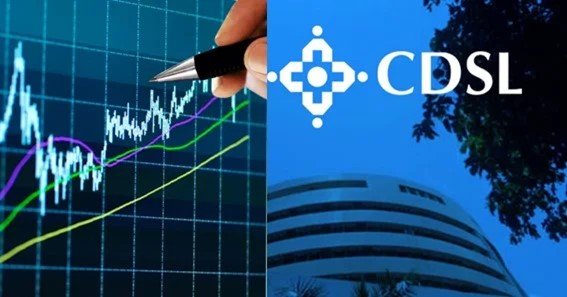Central Depository Services Limited (CDSL) plays a pivotal role in the Indian financial system, providing depository services to investors. Understanding the CDSL business model offers valuable insights into how the company operates and generates revenue. In this article, we will explore the key aspects of CDSL’s business, revenue, and profit models to understand how this financial giant continues to grow.
Overview of CDSL Business Model
The CDSL business model is built around providing depository services for securities in electronic form. CDSL enables investors to hold their shares and securities in a dematerialized (demat) account, which eliminates the risks associated with holding physical certificates. By offering depository services, CDSL generates revenue through various fees, including transaction charges, account maintenance fees, and other value-added services.
How CDSL Operates: The Core of Its Business Structure
At the heart of how CDSL operates is its network of depository participants (DPs), brokers, and investors. CDSL maintains and manages millions of demat accounts, allowing investors to securely trade and store their securities. The CDSL business structure relies on these DPs, who act as intermediaries between investors and CDSL. CDSL charges these intermediaries for services like account maintenance and transaction processing.
CDSL Revenue Model Explained
The CDSL revenue model is multifaceted, with income coming from several key sources:
- Account Maintenance Fees: CDSL charges an annual fee for maintaining demat accounts.
- Transaction Fees: For every trade, whether it’s a buy or sell, CDSL earns a transaction fee.
- Corporate Action Fees: CDSL charges companies for processing corporate actions like dividend payouts, bonus issues, and rights offerings.
- KYC Services: CDSL also provides Know Your Customer (KYC) services, a mandatory requirement for opening demat accounts, and earns revenue from these services.
These sources form the foundation of CDSL income streams, ensuring the company has a consistent flow of revenue from its day-to-day operations.
CDSL Profit Model: A Look at Its Financial Success
CDSL’s profit model is built on low operational costs and steady revenue from its services. Since CDSL acts as a facilitator between the stock market and investors, it enjoys a unique position with minimal competition. The company’s financial model revolves around its ability to charge fees for services like account maintenance and transaction processing, which are essential for investors and companies alike.
Moreover, CDSL benefits from the rising number of investors in India. With more individuals opening demat accounts and engaging in stock market activities, CDSL’s profits continue to grow. Its income generation is further enhanced by offering premium services and charging for corporate actions.
CDSL Financial Ecosystem: A Comprehensive Approach
The CDSL financial ecosystem is a well-rounded structure that includes the depository services for securities, income from corporate actions, and KYC services. CDSL is an integral part of the financial markets, providing essential market services that help brokers, companies, and investors efficiently manage their portfolios.
By offering a variety of services, CDSL ensures that its business remains diversified. Its revenue does not solely depend on account maintenance or transaction fees, but also includes income from ancillary services like KYC and corporate actions.
Conclusion: Why CDSL’s Business Model Is Successful
The CDSL business model is built on a strong foundation of essential services that are necessary for the smooth functioning of financial markets. By generating steady revenue from demat account maintenance, transaction fees, and corporate actions, CDSL continues to be a key player in India’s financial ecosystem. The company’s focus on providing secure and efficient services ensures that it remains a leader in the depository sector.
FAQ
- How does CDSL generate revenue?
CDSL generates revenue through account maintenance fees, transaction charges, corporate action fees, and KYC services, forming a robust CDSL revenue model. - What are the key elements of CDSL’s business structure?
The key elements of the CDSL business structure include its network of depository participants, brokers, and investors. CDSL acts as a depository for securities in electronic form, offering secure and reliable services. - How does CDSL ensure consistent profit generation?
CDSL’s profit model relies on steady income from account maintenance and transaction fees, along with additional revenue from corporate actions and KYC services. - What is CDSL’s financial model?
CDSL’s financial model is centered around providing depository services, generating income from demat accounts, transactions, and corporate actions, and offering value-added services to its clients. - How does CDSL fit into the financial ecosystem?
CDSL is an integral part of the financial ecosystem, providing essential depository and market services, ensuring that investors, brokers, and companies can trade and manage securities securely.
This article covers how CDSL operates, its revenue model, and the key elements that make its business model successful, while also addressing FAQs to provide a comprehensive understanding of its financial structure.
Disclaimer: This article is for informational purposes only and should not be taken as financial advice. Always consult a financial advisor for investment decisions.










